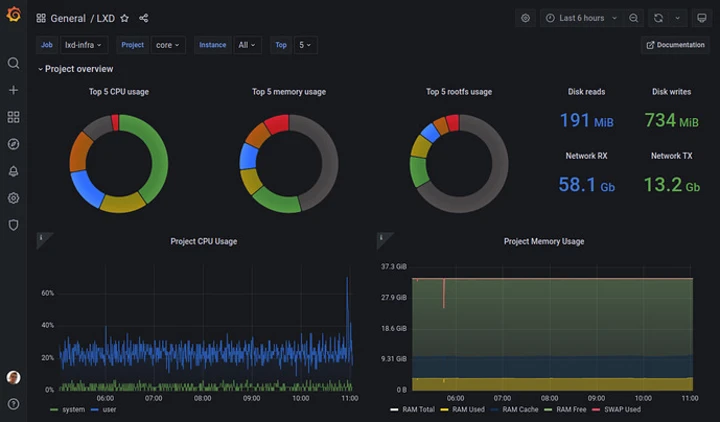LXD (pronounced “lex-dee”) is a versatile open-source system container and virtual machine manager. It offers a unified interface for managing both containerized and virtualized workloads, making it a flexible and efficient solution for various use cases.
How to Utilize LXD:
Installation:
Ubuntu: LXD is often pre-installed on Ubuntu Server images.
Other Systems: Install LXD using the package manager or snap package.
Basic Usage:
Create a Container:
Bash
lxc launch images:ubuntu/focal my-container
Start a Container:
Bash
lxc start my-container
Execute Commands Inside a Container:
Bash
lxc exec my-container -- bash
Advanced Usage:
Networking: Configure network interfaces, bridges, and VLANs.
Storage: Create storage pools and volumes to store container data.
Security: Implement security policies and access controls.
Clustering: Set up LXD clusters for high availability and load balancing.Benefits of LXD:
- Unified Interface: Manage both containers and VMs from a single tool.
- Performance: Offers high performance, especially for containerized workloads.
- Security: Provides robust security features to protect your workloads.
- Flexibility: Customize your environment with various configuration options.
- Scalability: Scale your infrastructure easily to meet growing demands.
- Ease of Use: User-friendly interface and automation capabilities.
Pros and Cons Compared to Alternatives:
| Feature | LXD | Docker | Virtual Machines (e.g., KVM) |
|---|---|---|---|
| Performance | High for containers, moderate for VMs | High for containers | Lower, especially for resource-intensive workloads |
| Security | Strong, with advanced security features | Good, but relies on host OS security | Very strong, with hardware-level isolation |
| Flexibility | High, supports various configurations | Moderate, limited to containerized workloads | High, can run any operating system |
| Ease of Use | User-friendly interface, but requires some technical knowledge | Relatively easy to use, but less flexible | More complex to manage, especially large-scale deployments |
When to Choose LXD:
- High-performance containerized workloads: LXD is ideal for applications that require minimal overhead.
- Hybrid environments: You can run both containers and VMs on the same platform.
- Scalability and flexibility: LXD can be scaled to support a wide range of workloads.
In conclusion, LXD is a powerful and versatile tool for managing both containers and virtual machines. By understanding its benefits and limitations, you can effectively leverage LXD to optimize your infrastructure and improve your application deployment and management processes.

